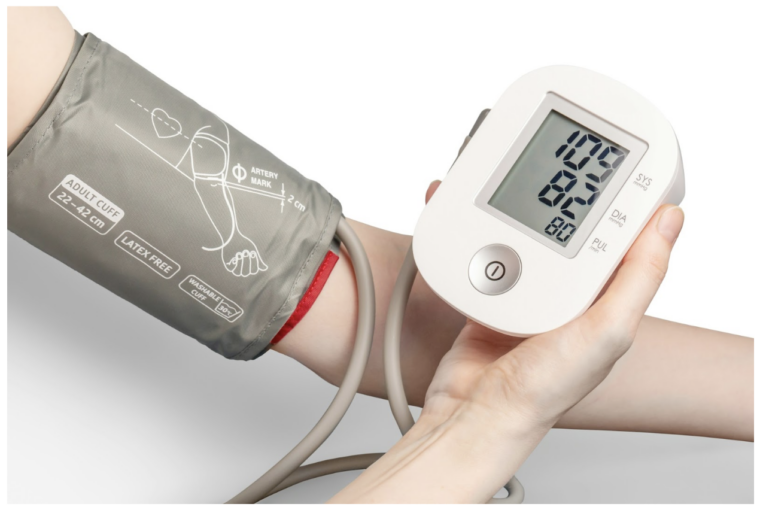How to Naturally Lower High Blood Pressure with Diet and Lifestyle Changes
Alright, so you’ve been told that your blood pressure is creeping up, and now you’re looking for ways to bring it down without jumping straight to medication. The good news? It’s totally doable with some simple tweaks to your diet and lifestyle. Let’s break down how you can naturally lower your blood pressure and keep it in check for the long haul.

Understanding Blood Pressure: Why It Matters
Before diving into the how, let’s talk about the why. High blood pressure, also known as hypertension, is like having your plumbing under too much pressure. Over time, that extra force can wear out your heart, damage your arteries, and lead to serious health issues like heart disease, stroke, and kidney problems. The bottom line? Keeping your blood pressure in a healthy range is crucial for your overall well-being.
Eat Your Way to Lower Blood Pressure
Diet plays a huge role in managing blood pressure. What you eat can either help lower it or send it skyrocketing. Here’s how to make your diet work for you:
1. Load Up on Fruits and Veggies
Let’s start with the basics—fruits and vegetables. These powerhouses are packed with potassium, a mineral that helps your body balance the amount of sodium (salt) it holds onto. More potassium means less sodium, and less sodium means lower blood pressure.
- Top Picks: Bananas, sweet potatoes, spinach, avocados, and oranges are all rich in potassium.
- Pro Tip: Aim for at least 4-5 servings of fruits and vegetables each day. If fresh isn’t your thing, frozen works just as well.
2. Cut Back on Sodium
Sodium is one of the biggest dietary culprits behind high blood pressure. The average American diet is packed with way more sodium than we need, thanks to processed foods, restaurant meals, and even seemingly healthy options like canned soups.
- Easy Swaps: Opt for fresh, whole foods over processed ones. When you do reach for something canned or pre-packaged, check the label for sodium content—aim for options with less than 140 mg of sodium per serving.
- Cooking Tip: Use herbs and spices to flavor your food instead of salt. Lemon, garlic, rosemary, and black pepper can add tons of flavor without the sodium hit.
3. Go for Whole Grains
Whole grains are another key player in a heart-healthy diet. They’re packed with fiber, which can help reduce blood pressure by improving blood vessel function and helping you feel full, so you’re less likely to overeat.
- Best Bets: Oats, brown rice, quinoa, and whole-wheat pasta are great options.
- Pro Tip: Swap out refined grains like white bread and white rice for their whole-grain counterparts. It’s a simple switch that can make a big difference.
4. Choose Healthy Fats
Not all fats are created equal. While saturated fats (found in red meat and full-fat dairy) can raise your blood pressure, healthy fats can do the opposite.
- Go-To Sources: Avocados, nuts, seeds, and olive oil are rich in monounsaturated and polyunsaturated fats, which are great for heart health.
- What to Avoid: Cut back on trans fats (found in many processed foods) and saturated fats. Instead, focus on fats that come from plant-based sources.
5. Limit Added Sugars
Sugar isn’t just bad for your waistline; it’s also bad news for your blood pressure. Diets high in added sugars, especially from sugary drinks, can lead to weight gain and increased blood pressure.
- Smart Swaps: Replace sugary drinks with water, herbal tea, or sparkling water. If you’re craving something sweet, go for fruit instead of dessert.
- Label Check: Keep an eye on labels—added sugars hide in many foods, even ones that don’t taste sweet, like sauces and breads.

Lifestyle Tweaks for Lower Blood Pressure
Diet is just one piece of the puzzle. How you live day-to-day also has a big impact on your blood pressure. Here’s how to make lifestyle changes that stick:
1. Move More, Sit Less
Regular physical activity is one of the best things you can do to lower your blood pressure. Exercise helps your heart use oxygen more efficiently, which means it doesn’t have to work as hard to pump blood.
- Activity Ideas: Aim for at least 150 minutes of moderate-intensity exercise each week. That’s just 30 minutes a day, five days a week. Walking, swimming, cycling, and even dancing count.
- Pro Tip: If you’re new to exercise, start slow and build up gradually. Even small increases in activity can make a big difference.
2. Manage Stress Like a Pro
Stress is a major contributor to high blood pressure. When you’re stressed, your body goes into fight-or-flight mode, which increases your heart rate and constricts your blood vessels—both of which spike your blood pressure.
- Stress Busters: Try relaxation techniques like deep breathing, meditation, or yoga. Even just taking a few minutes a day to unwind can have a big impact.
- Lifestyle Tip: Make time for activities you enjoy, whether it’s reading, gardening, or hanging out with friends. A balanced life is a less stressful life.
3. Watch Your Weight
Carrying extra weight puts additional strain on your heart, which can lead to higher blood pressure. Losing even a small amount of weight can have a big impact.
- Healthy Goals: Aim to lose about 1-2 pounds per week by combining healthy eating with regular physical activity.
- Pro Tip: Focus on small, sustainable changes rather than drastic diets. The goal is long-term health, not quick fixes.
4. Limit Alcohol and Caffeine
Both alcohol and caffeine can raise your blood pressure, especially if consumed in excess.
- Smart Drinking: Limit alcohol to no more than one drink per day for women and two for men. When it comes to caffeine, monitor how it affects you personally—some people are more sensitive to its effects than others.
- Alternatives: Try swapping your morning coffee for herbal tea or starting your night out with a non-alcoholic beverage. It’s all about balance.
5. Quit Smoking
If you smoke, quitting is one of the best things you can do for your blood pressure and your overall health. Smoking damages your blood vessels and raises your risk of heart disease, stroke, and a host of other health problems.
- Getting Started: Talk to your doctor about strategies for quitting, whether it’s nicotine replacement therapy, medications, or a support group.
- Pro Tip: Focus on the benefits. Within just a few weeks of quitting, your blood pressure starts to drop, and your risk of heart disease begins to decrease.

Putting It All Together
Lowering your blood pressure naturally is all about making smart choices every day. By eating a balanced diet rich in fruits, vegetables, whole grains, and healthy fats—and by staying active, managing stress, and avoiding harmful habits—you can take control of your blood pressure and improve your health for the long term.
Remember, these changes don’t have to happen overnight. Start with one or two tweaks, and build from there. The key is consistency—stick with it, and you’ll see results that not only lower your blood pressure but also boost your overall quality of life.
